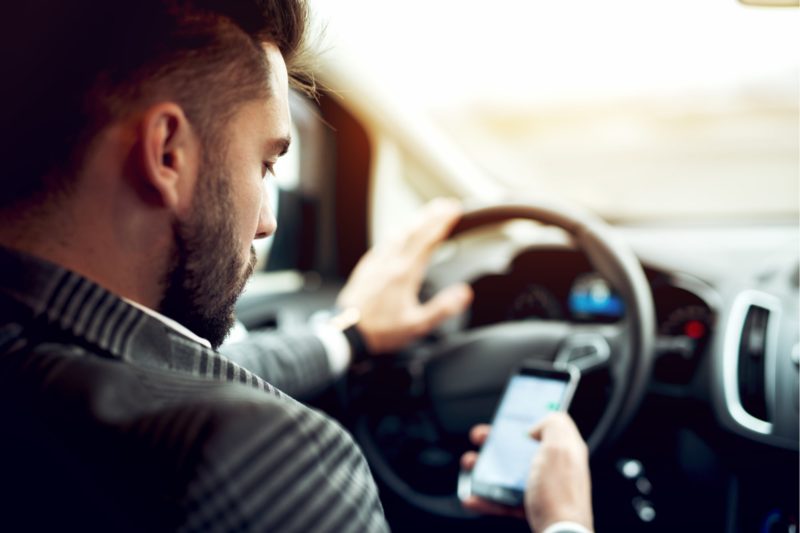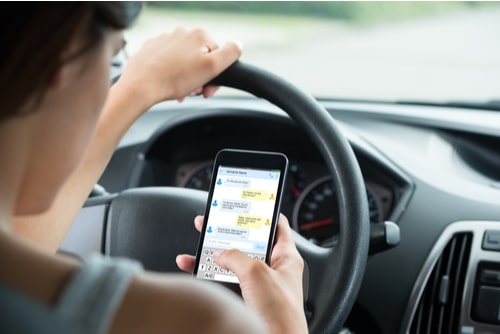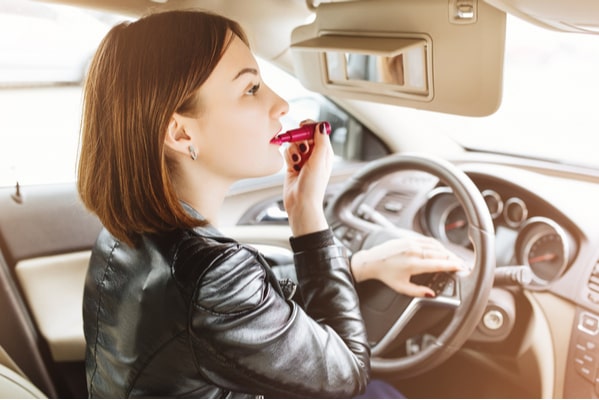Navigating Away From Distracted Driving: The 10 Biggest Distractions

Distracted driving is a perilous behavior that endangers everyone on the road. With over 3,000 fatalities annually in the U.S. alone, you can see why it might be a big deal. Here are the top 10 driving distractions backed by academic research, ranging from cell phone use while driving to more difficult topics like emotional distress. By understanding and mitigating these distractions, you can significantly improve road safety and reduce accident rates. This can also help you keep your auto insurance premiums at a minimum.
Stay focused, stay safe, and read on to learn how to keep your attention where it belongs: on the road.
The Danger of Distracted Driving
It shouldn’t come as any surprise that distracted driving stands as one of the leading causes of road accidents around the world. In fact, according to the National Highway Traffic Safety Administration (NHTSA), 3,142 people died in the United States alone in 2019 due to distracted drivers.
Every day, drivers like you face distractions from all areas, including smartphones (such as texting while driving), eating, what’s going outside the window, pets, and more. Understanding exactly how these distractions can cause you to get into a dangerous situation can help you avoid falling prey to them.
Read on to learn more about the top 10 biggest distractions on the road today, backed by the latest academic research, to better understand how you can stay safe on the go!

1. The Lure of the Smartphone
Smartphones have revolutionized communication, but their presence in the car is hazardous. Research shows that texting while driving increases the risk of a crash by 23 times. Even hands-free devices are unsafe; a study by Strayer and Drews (2007) found that conversing on hands-free devices significantly impairs reaction time and situational awareness, similar to driving with a blood alcohol concentration of 0.08%. That’s like operating your car while drunk!
The temptation to use a smartphone while operating a vehicle is strong, but the best practice is to keep your phone out of reach or use apps that block notifications while driving.
2. Eating and Drinking Behind the Wheel
Eating or drinking while operating a car is a common but overlooked distraction. A study by Stutts et al. (2001) found that drivers engaged in eating or drinking were 1.57 times more likely to be involved in a crash. This can also include driving while taking OTC medication.
Handling food, unwrapping packages, or even sipping a drink requires drivers to take at least one hand off the wheel and their eyes off the road, creating dangerous scenarios. Taking time to eat before hitting the road or pulling over for a quick snack can significantly reduce this risk.
3. External Distractions: Outside the Vehicle
The world outside your car is full of potential distractions. Research by Young and Mahfoud (2007) indicates that external distractions, such as billboards, other vehicles, and scenic views, can significantly impact your ability to drive.
Rubbernecking, or slowing down to look at accidents, is a prime example of how external events can cause significant delays and accidents. It’s crucial to maintain focus on the road ahead and avoid letting these external distractions pull your attention away from safely operating your car.
4. Fiddling With Controls
Modern vehicles come equipped with numerous controls, from climate settings to infotainment systems. Adjusting these controls while driving can be as distracting as using a smartphone. A study by Green (1999) found that adjusting in-vehicle devices could take drivers’ eyes off the road for an average of 4.6 seconds, increasing the risk of crashes. This is just one of the many bad driving habits to avoid.
Familiarizing yourself with your vehicle’s controls and setting them up before driving can help minimize this distraction. Voice-activated controls can also be a safer alternative, allowing you to keep your hands on the wheel and eyes on the road.
5. Pets as Passengers
Bringing pets along for a ride can make a journey more enjoyable, but they can also be a significant distraction. You might want to think twice before you bring your furry companion along for your next drive!
According to a study by AAA, unrestrained pets in vehicles can lead to dangerous conditions. Nearly 65% of pet owners admit to engaging in at least one potentially distracting activity while driving with their pets.
You should secure pets properly using pet carriers or seat belts designed for animals to ensure they remain safe and minimize distraction.
6. The Conversation Pitfall
Talking with passengers is a normal part of being behind the wheel, but it can sometimes be a distraction. When you engage in heated debates or turn to look at passengers, you take your focus off the road. Drews, Pasupathi, and Strayer (2008) conducted a study that found conversations with passengers can significantly impair your driving performance, especially in complex environments. To maintain focus, you need to keep conversations light and non-distracting, particularly in challenging driving conditions.
7. Grooming on the Go
In today’s busy world, some people try to save time by grooming while driving. A study by the Virginia Tech Transportation Institute (2006) found that drivers who engage in personal grooming are three times more likely to be involved in a crash than those who are not distracted. These activities require you to take your eyes off the road and often involve complex motor skills that should not be performed while behind the wheel. By prioritizing your grooming routine before leaving the house or pulling over if needed, you can help ensure safer driving.

8. Reaching for Items
Reaching for items in your car, such as a dropped phone or bag, can be highly distracting. According to research by the AAA Foundation for Traffic Safety (2016), reaching for an object increases your risk of a crash by nearly eight times. This action often requires you to take your eyes off the road and one or both hands off the wheel. By keeping frequently used items within easy reach and pulling over if you need to retrieve something from a hard-to-reach spot, you can help reduce this risk.
9. The Emotional Rollercoaster
Driving while experiencing strong emotions, whether it’s anger, sadness, anxiety, or stress, can be incredibly distracting. A study by Dula and Geller (2003) found that drivers experiencing high emotional arousal are more likely to engage in risky driving behaviors and have impaired judgment.
Emotions can cloud your judgment, slow your reaction time, and lead to aggressive or erratic driving. Recognizing when you’re not in the right emotional state to drive and taking steps to calm down can help ensure you drive safely. You can also check out this guide for helpful tips for anxious drivers.
10. The Fatigue Factor
Fatigue is one of the most dangerous driving distractions. The National Sleep Foundation (2012) reports that driving while tired can be as dangerous as operating a vehicle under the influence of alcohol, with drowsy drivers causing approximately 100,000 crashes each year in the U.S.
Fatigue impairs reaction time, decision-making, and overall alertness. Recognizing the signs of fatigue, such as frequent yawning, difficulty focusing, or drifting between lanes, and taking breaks when needed, are crucial for safe driving. Staying hydrated and consuming caffeine can help, but they are no substitute for adequate rest.
Stay Focused and Stay Protected
Staying focused while driving is essential for your safety and that of others on the road. By being aware of these common distractions and taking steps to minimize them, you can help create an environment that’s less conducive to accidents. Remember, the key to getting to your destination without incident is maintaining your focus and attention on the road at all times.
Another important way to stay safe on the road is to have the right auto insurance. At Bluefire Insurance, we’re here to help. Give us a call today at (866) 424-9511 or contact us online. And make sure you don’t get distracted on the way over by flimsy promises from other insurers — we’re the real deal!
Related Articles
-
 August 7th 2023
August 7th 2023The Top 10 Biggest Issues Auto Insurance Agents are Facing Today
In the post-pandemic world, insurance agents face numerous new challenges, as well as some old ones. In[...]
-
 June 17th 2024
June 17th 2024The Evolution of Personal Lines Insurance: What Independent Agents Need to Know
Ever since the development of the internet, personal lines insurance agencies have undergone a tremendous amount of[...]
-
 June 3rd 2024
June 3rd 2024Tapping into Emerging Markets: The Role of Independent Agents in Today’s Insurance Industry Trends
Insurance industry trends have shifted dramatically in the past two decades. The average client has a level[...]
-
 May 21st 2024
May 21st 2024What Does It Take to Be an Insurance Agent Today in America’s Southeast
Becoming an insurance producer can be an exciting and rewarding career path. In this job, you can[...]
